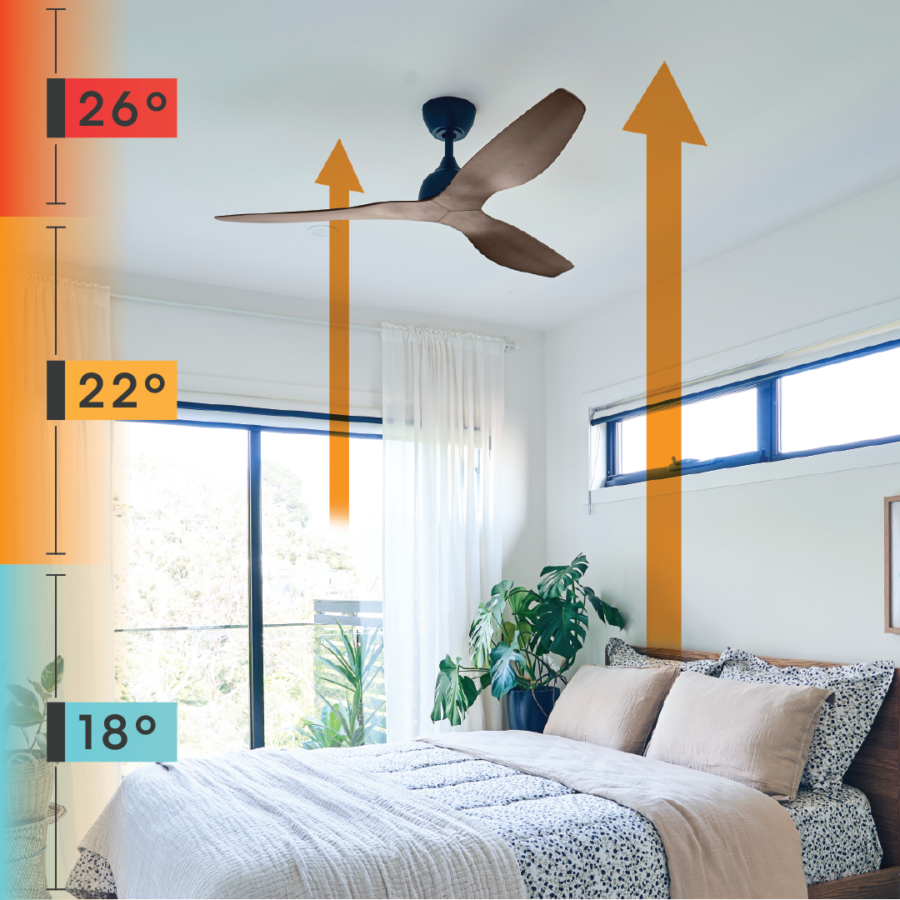As the chill of winter sets in, many homeowners are looking for ways to stay comfortable without breaking the bank on heating costs. One often-overlooked solution is the humble ceiling fan. While most people associate ceiling fans with summer cooling, they can be a powerful tool for improving indoor comfort during the colder months. The key lies in understanding how to adjust your fan’s direction for optimal performance.
In this article, we’ll explore the importance of Fan Direction Winter, explain how it works, and provide practical tips to help you maximize energy efficiency and comfort in your home.
Why Fan Direction Matters in Winter
The basic principle behind ceiling fan direction is simple: air moves differently depending on the direction the blades rotate. In the summer, fans are set to spin counter-clockwise to push cool air down and create a refreshing breeze. But in the winter, the goal shifts from cooling to circulating warm air that tends to rise and accumulate near the ceiling.
When you turn on your heater or fireplace, warm air rises, leaving the lower part of the room cold. This creates an uncomfortable temperature imbalance. By reversing your ceiling fan’s direction, you can gently pull the warm air down from the ceiling and redistribute it throughout the room. This not only improves comfort but also helps reduce heating costs by allowing you to lower your thermostat slightly.
How to Change Your Ceiling Fan Direction

Most modern ceiling fans come with a built-in switch or remote control that allows you to reverse the direction of the blades. Here’s how to do it:
- Turn off the fan and wait for it to stop completely.
- Locate the reverse switch—this is typically found on the motor housing or inside the light fixture.
- Flip the switch to change the direction. If using a remote, look for a button labeled “reverse” or “direction.”
- Test the new direction by turning the fan back on.
It’s important to note that the clockwise direction is ideal for winter use. When the fan spins clockwise, it pulls air up from the floor and pushes the warm air down toward you, creating a more even distribution of heat.
What Direction Should Your Fan Be in Winter?

To ensure your fan is working efficiently during the winter, follow these guidelines:
- Clockwise rotation: This is the correct direction for winter. It pulls cold air up and forces warm air down.
- Low speed setting: During the winter, run your fan at a low speed to avoid creating a windchill effect that could make you feel colder.
If you’re unsure which way your fan is spinning, stand directly under it and observe the direction of the blades. If they’re moving clockwise, you’re good to go. If not, simply reverse the direction using the switch or remote.
Benefits of Using a Ceiling Fan in Winter
Using your ceiling fan correctly in the winter can offer several advantages:
1. Improved Comfort
By redistributing warm air, your ceiling fan helps eliminate cold spots and keeps the entire room evenly heated. This means you won’t have to rely as much on your heating system, leading to a more comfortable living environment.
2. Energy Savings
According to studies by the University of Florida Cooperative Extension and the University of Arkansas, using a ceiling fan in the winter can reduce heating costs by up to 20-30%. This is because the fan helps circulate warm air, allowing you to lower your thermostat without sacrificing comfort.
3. Enhanced Air Quality
A ceiling fan running in the winter can also help improve indoor air quality by promoting better air circulation. This is especially beneficial in tightly sealed homes where stale air can accumulate.
Common Mistakes to Avoid

While adjusting your fan’s direction is straightforward, there are a few common mistakes to watch out for:
- Forgetting to turn off the fan before changing direction: Attempting to change the direction while the fan is still spinning can damage the motor.
- Running the fan at high speed in winter: High speeds can create a draft, making the room feel colder rather than warmer.
- Not using the fan when no one is in the room: Fans don’t generate heat, so they should only be used when people are present to benefit from the circulating warm air.
Additional Tips for Winter Fan Use

Here are a few additional tips to get the most out of your ceiling fan during the colder months:
- Use it in conjunction with your heating system: A ceiling fan works best when paired with a furnace, space heater, or fireplace.
- Keep the fan clean: Dust buildup can reduce efficiency, so make sure to clean the blades regularly.
- Consider a smart fan: Smart ceiling fans allow you to control the direction and speed remotely, making it easier to adjust settings as needed.
Conclusion
Understanding Fan Direction Winter is essential for maximizing both comfort and energy efficiency in your home. By reversing your ceiling fan’s direction to clockwise during the colder months, you can help circulate warm air more effectively, reduce heating costs, and enjoy a more balanced indoor climate.
Whether you’re looking to save money or simply stay cozy, taking the time to adjust your fan’s direction is a small step that can make a big difference. With a little knowledge and effort, you can make the most of your ceiling fan all year round.
Frequently Asked Questions (FAQ)
Q: Can I use my ceiling fan in the winter?
A: Yes, but it should be set to clockwise to help circulate warm air.
Q: Does a ceiling fan actually heat a room?
A: No, a ceiling fan doesn’t generate heat. It only circulates air to distribute existing heat more evenly.
Q: How much can I save on heating bills by using a ceiling fan?
A: Studies suggest you can save up to 20-30% on heating costs by using a ceiling fan in the winter.
Q: How do I know if my fan is set to the right direction?
A: Stand under the fan and observe the direction of the blades. If they’re moving clockwise, you’re good to go.
Final Thoughts
As the weather gets colder, it’s easy to overlook the potential of your ceiling fan. However, by simply adjusting its direction, you can significantly improve your home’s comfort and energy efficiency. Whether you’re looking to cut costs or just stay warm, understanding Fan Direction Winter is a valuable skill that can benefit any homeowner.
Stay updated with the latest news and tips on optimizing your home for all seasons. Explore today’s headlines and discover how small changes can lead to big improvements in your daily life.










More Stories
67 Emote Clash Royale Emote: Complete List and Guide
What Is the 504 Gateway Timeout Error and How to Fix It?
US Trending News: 67 Emote Clash Royale QR Code: How to Use and Where to Find It